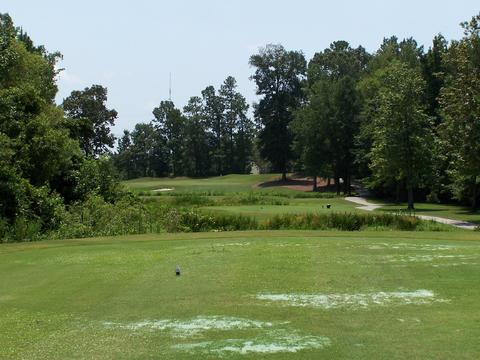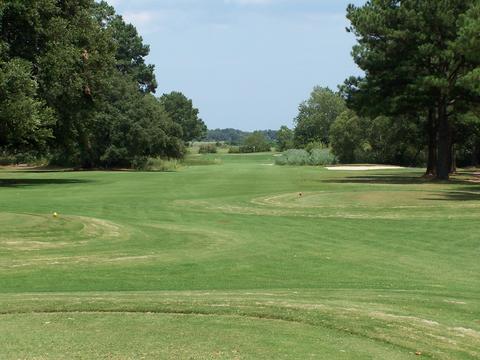
At 224 from the tips, the 11th at Coosaw Creek requires length and accuracy.
I am a big fan of Arthur Hills' designed courses. Everyone of the half dozen or so that I have played stress course management skills. On a Hills course, it is always best to be on the proper side of the fairway before approaching his sloped greens. Rarely is it a good thing to be anywhere but below the hole on the greens.
I was looking forward to a round yesterday at his Coosaw Creek course, a semi-private layout set inside the gated community of the same name in Summerville, SC. The course plays just 6,500 yards from the tips, but the slope is a robust 140, with a course rating of 72.7. Despite some bad swings that left me in impossible positions (some of them wet ones), I thought Coosaw a wonderful design. I probably should have saved the back tees, though, for a slightly cooler day; temperatures reached the high 90s with no breeze, making me hot under the collar and just about everywhere else.
Coosaw Creek is just 10 minutes from Charleston International Airport and close to I-26, which runs between Charleston and Columbia, SC. Look for a review of Coosaw Creek in the next few days in this space, and a more extended consideration of the course and the community in HomeOnTheCourse, our bi-monthly newsletter.
























